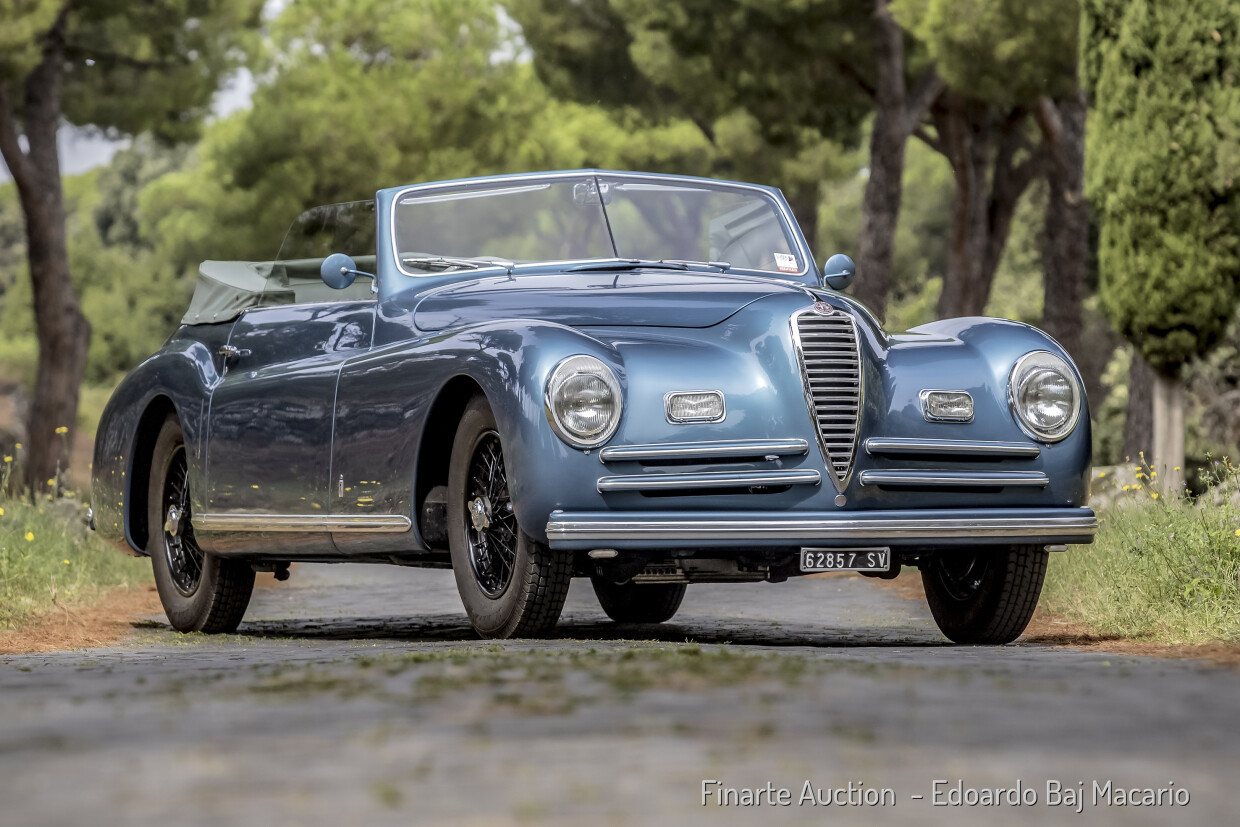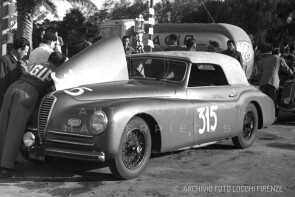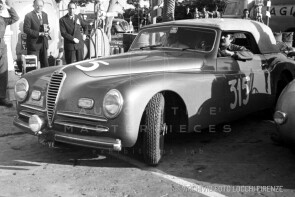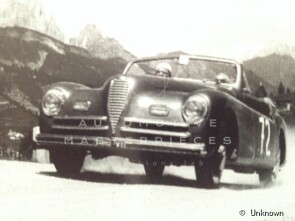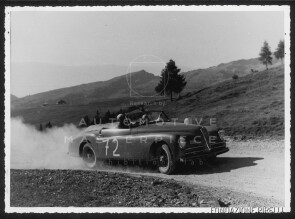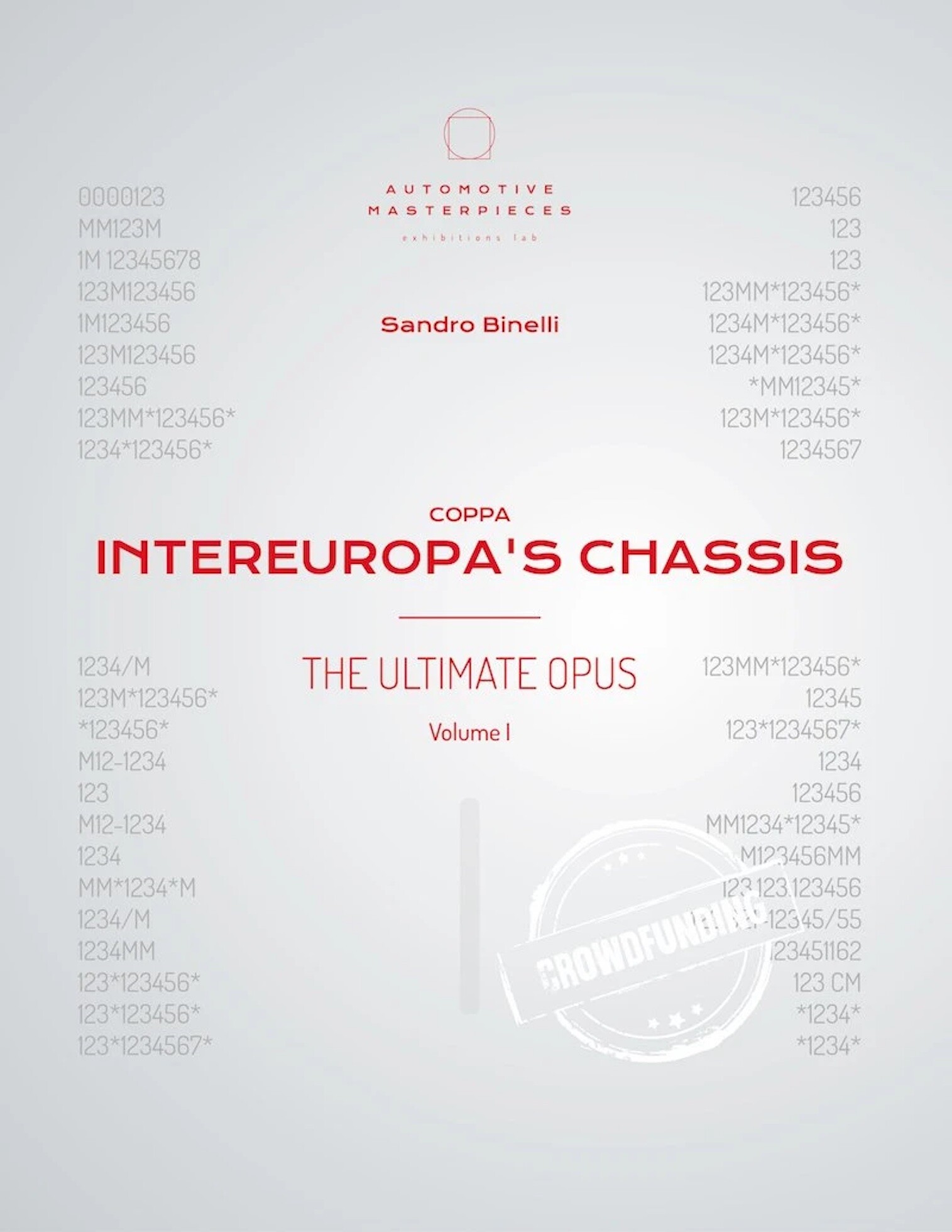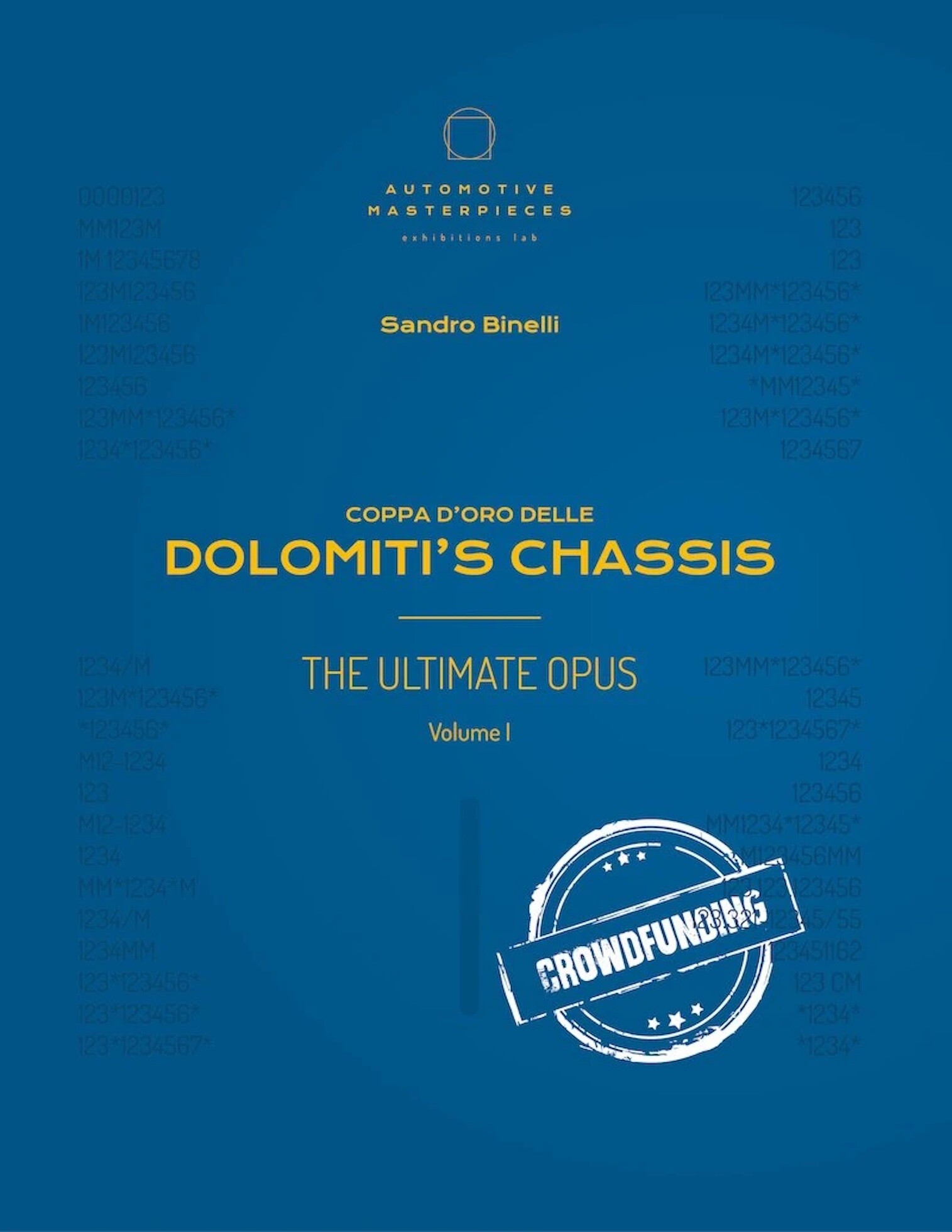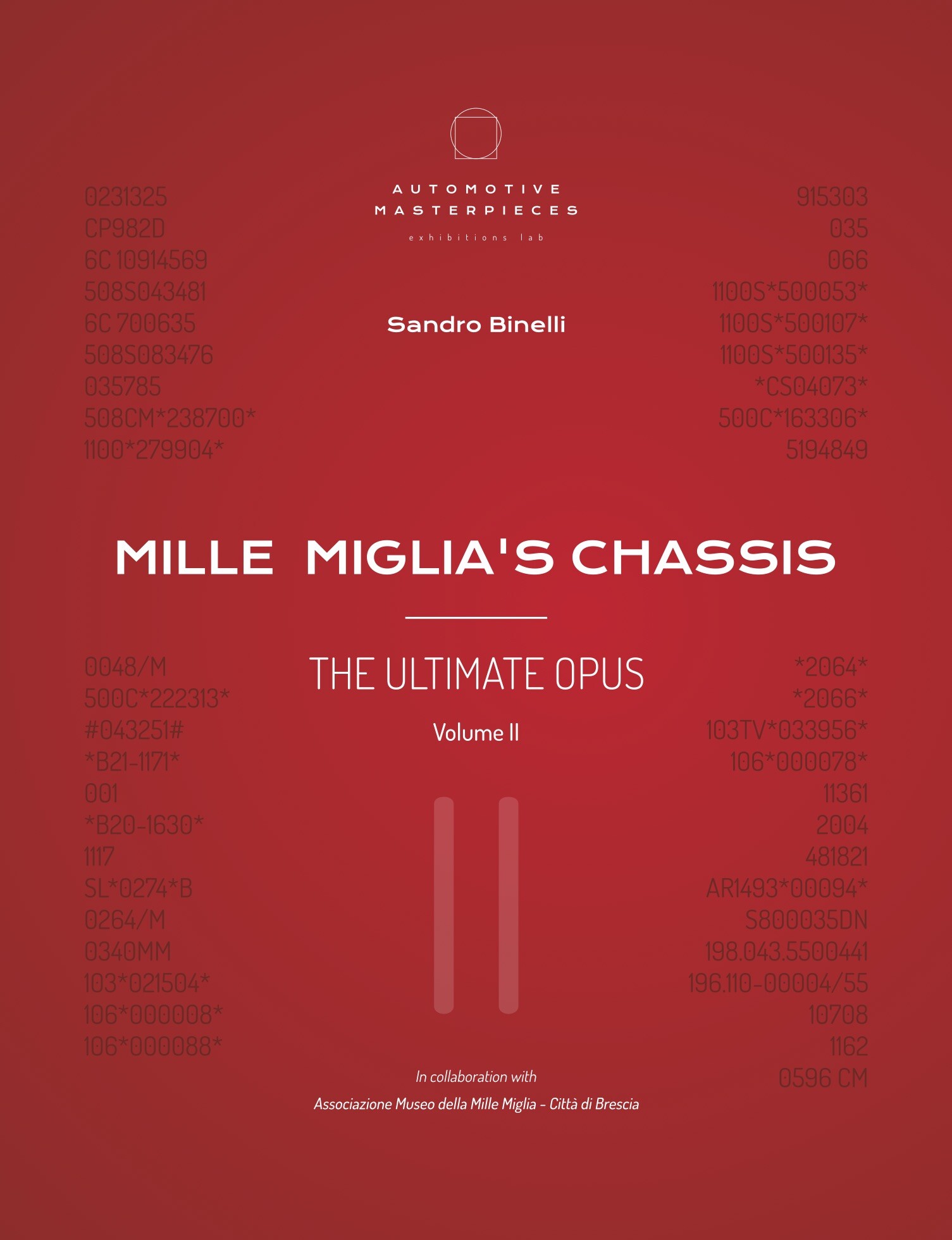
1947 Alfa Romeo 6C 2500 Sport Cabriolet
ON/OFF
Why am I an Automotive Masterpiece?
The history of Alfa Romeo coincides basically with that of the history of the automobile and features many stories and numerous cars. The Alfa Romeo 6C stands out amongst the most representative models – the cars of the beginning and the modern post-war ones, and the racing and touring cars. The long journey of the Alfa Romeo 6C lasted almost 25 years, accompanying Alfa Romeo industries from the 20s to the 50s. In the early 1920s, Vittorio Jano was commissioned with creating a lightweight, high-performance vehicle to replace the large and heavy RL and RM models. The Alfa Romeo 6C was not only a model, but a complete range of road, race, and sports cars, produced between 1927 and 1954. The "6C" name refers to the number of cylinders of the car's inline-six engine. The different models’ bodies were made by coachbuilders such as Castagna, James Young, Pinin Farina, Touring and Zagato. From 1933, an Alfa Romeo built body also became available; it was made in Portello. The car was introduced in April 1925 at the Salone dell'Automobile di Milano as the 6C 1500, since the 2-litre class - that led Alfa Romeo to win the Automobile World Championship in 1925 - changed into the 1.5-litre class for 1926’s race season. The production started in 1927, with the P2 Grand Prix car as a base model. The more powerful 6C 1750 was introduced in 1929 in Rome. It was produced in six series between 1929 and 1933. Most of the cars were sold as a bare-chassis, then bodied by coachbuilders. The 1750 quickly gained a reputation for winning races. In 1933, the new Alfa Romeo 6C 1900 version was introduced, with a displacement of 1917 cc and with a light alloy head – used here for the first time. The powerful 8C 2300s, despite their successes, remained reserved for races and, to satisfy the market’s request for a high-performance automobile sold at a lower price, Alfa Romeo introduced the 6C 2300 at the Salone dell’Auto di Milano in 1934, designed to replace the 6C 1900. That same year, three 6C 2300 Gran Turismo bodied by Carrozzeria Touring won the first three places at the 24 Ore di Pescara. Therefore, after the race, Alfa Romeo began to sell the model under the new “Pescara” name. The arrival of the 6C 2300 B was a real revolution, introducing a chassis with independent suspensions on the four wheels. This car was the undisputed leader in the history of the Mille Miglia race from 1935 to 1938, with various 6C models competing as part of fully-fledged teams, driven by some of the most talented drivers of the era.
The Alfa Romeo 6C 2300 was succeeded by the 6C 2500, the final model in the series before World War II. When production resumed after the war, numerous special versions were created, showcased at concours d’elegance, and still made significant impacts in races. While the 6C 2300 B of 1935 marked a departure from the original 6C design, the engine maintained a direct connection to its roots. The evolution of the 6C engine, which began in 1925, culminated in the final 2.5-liter displacement. This design, conceived by Vittorio Jano, remained fundamentally unchanged and continued in production until 1953. The Sport version of the 6C 2500 debuted at the 1939 Berlin Motor Show, followed by the Turismo soon after. In 1942, the chassis underwent a significant redesign, featuring a stiffened central crossbeam that replaced the earlier parallel beams. The 6C 2500 Sport version featured an engine derived from the 6C 2300 B Mille Miglia. The displacement increase was achieved by enlarging the bore by 2 mm. It utilized a Weber 36 DCR carburetor similar to that of the Turismo model but with modified specifications. The Sport model was equipped with 5.50x18 tires on wire wheels. No Sport models were produced in 1941 due to wartime priorities. In 1942, the Sport model adopted the same chassis modifications as the Turismo model, starting with frame no. 915119. Wartime production constraints led to only a few cars being built in 1943 and 1944. After the war, production resumed, and many chassis were supplied to independent coachbuilders for bespoke designs. Pinin Farina and Touring received most of these commissions, followed by Stabilimenti Farina, Ghia, Boneschi, Castagna and many others. A noteworthy development was the creation of the famous Super Sport version, derived from the 6C 2500 Sport. This model, designed for competition, featured a shortened chassis and three carburetors instead of one. The Super Sport lineage began in 1939 with the 256 model—a racing version with Scuderia Ferrari origins, as indicated by its name (2.5 liters, 6 cylinders). It evolved into the Super Sport road car, which remained in production until 1953, with Carrozzeria Touring's iconic "Villa d'Este" coupe serving as its pinnacle. The last 6C 2500 Sport example was built in 1950. The 2500 marked the end of the 6C series and was succeeded by the Alfa Romeo 1900.
The 1947 Alfa Romeo 6C 2500 Sport, with chassis no. 915303 and engine no. 926113- its original matching numbers- is a cabriolet version produced by Pinin Farina. The Pinin Farina cabriolet was presented in Lausanne on 4 and 5 October 1946 as part of the "Premières Journées d'Elégance" event, which aimed to revive the Italian bodywork after the war period. This car boasts the probably most iconic body style for this model. A design that presents typical Pinin Farina stylistic features, such as integrated headlights, flowing and continuous lines, recessed door handles, also typical of the Ferrari and Cisitalia designed by Pinin Farina in this period. The 6C 2500 offered this design in larger and more comfortable volumes and proportions. It is commonly believed that the Sport Cabriolet was the first post-war Italian gran turismo. The chassis no. 915303 has an unusual history for the model. Despite having a spirit more focused on elegance and grand touring, it was used competitively, in races of the utmost importance. Curiously, the first two owners appear to be two well-known racing drivers: the first, Giorgio Pelassa of Turin, in 1947 and Gaetano Coppola between 1947 and 1948. The two had both participated in the Mille Miglia before the war and Pelassa would also participate in other important competitions later. There is no record of either of them racing this car; however, more in-depth research could reveal their participation in sporting events with this chassis. In 1949, it was raced by an expert gentleman driver, the Earl Massimo Alesi, who then owned an Alfa Romeo 6C 2500 Competizione and a Ferrari 166 Inter. In 1949 Alesi ran with chassis no. 915303 in the XVI Mille Miglia – Coppa Franco Mazzotti, finishing 50th overall: an excellent result for a massive and comfortable touring cabriolet. In the same year he participated with the car in the Coppa Inter-Europa, finishing 2nd in class, at the III Coppa Internazionale delle Dolomiti (later known as the Coppa d’Oro delle Dolomiti) where he ranked 40th overall and the 3rd Stella Alpina, ranking 12th overall. The car was first registered in Turin (with Giorgio Pelassa, TO80418) then, following property transfer, in Rome (Roma 107224), Venice (VE15982, the plate of the Mille Miglia), Imperia (IM10648) and finally Savona (SV62857), this plate was kept from 1965 until recently. Currently the car is registered with a US license plate. As noted above, this car retains the original engine, chassis and Pinin Farina body. On this basis, in the period from 2001 to 2006, the car was subjected to a complete and top-level restoration carried out by Carrozzeria Quality Cars in Padova, specialists in the Alfa Romeo brand, which respected the original livery. Particular attention has been paid to all the mechanical and finishing details, including the precious transparent knobs. Its splendid finishing reflects its elegant and racing- double soul: the color is a particular nuanced blue-green metallic combined with the interior in soft pale green leather, complemented by the blue canvas top: a highly refined ensemble. At the same time the black-painted spoked wheels, with Michelin tires lacking the typical white wall of the era for this type of car, give the car, by way of contrast, a particularly sporty and “gritty” appearance, rare for this model. In the car, the original tool set is present, including the copper hammer to tighten the knockoff hubs. Recently it has undergone a mechanical refurbishment. The car took part in the 2018 Coppa d’Oro delle Dolomiti and was accepted in the 2019 Mille Miglia. It is featured in the book Mille Miglia’s Chassis - The Ultimate Opus, volume II, published by Automotive Masterpieces. It is the best of both worlds: a jewel, a sure protagonist in concours d’elegance; an unusual and unexpected sports car for long-distance races.
